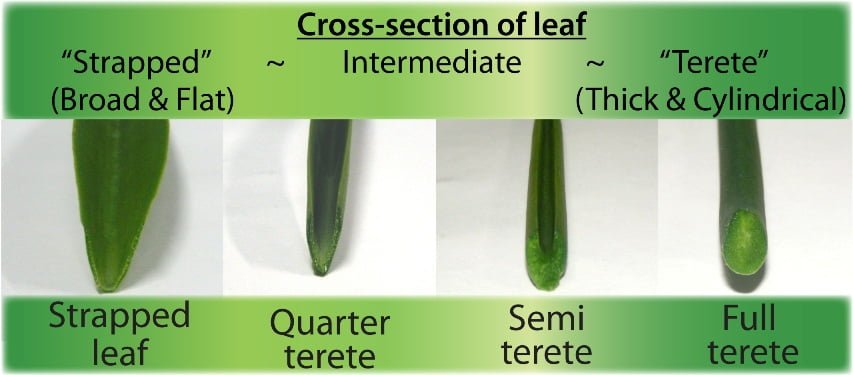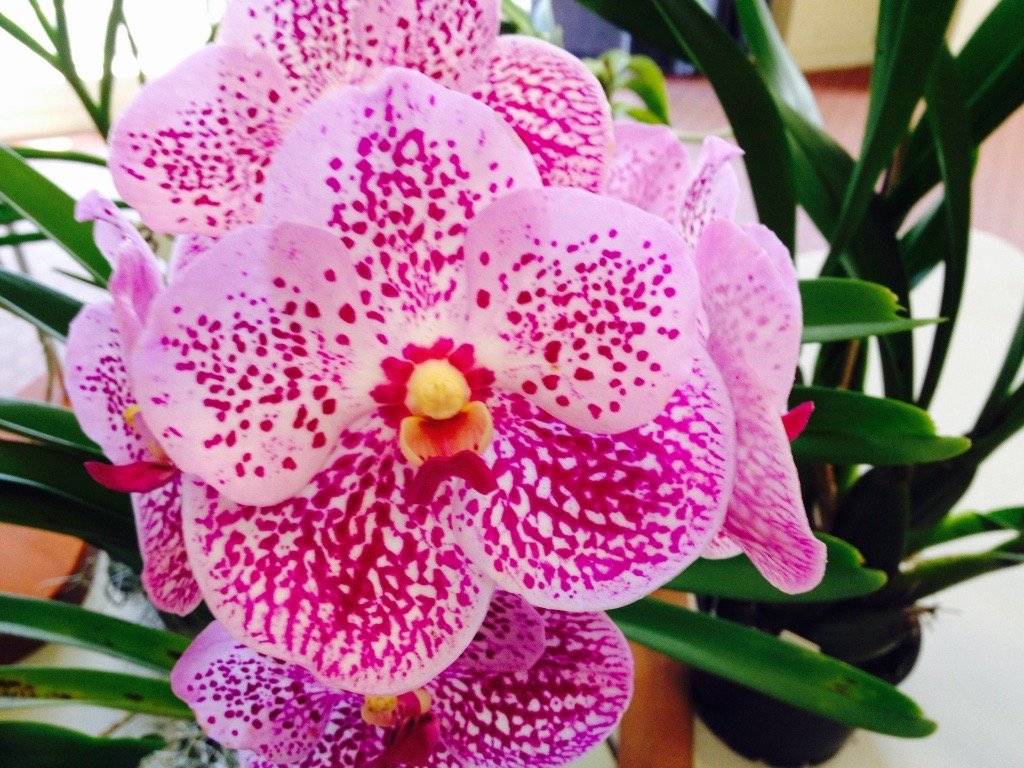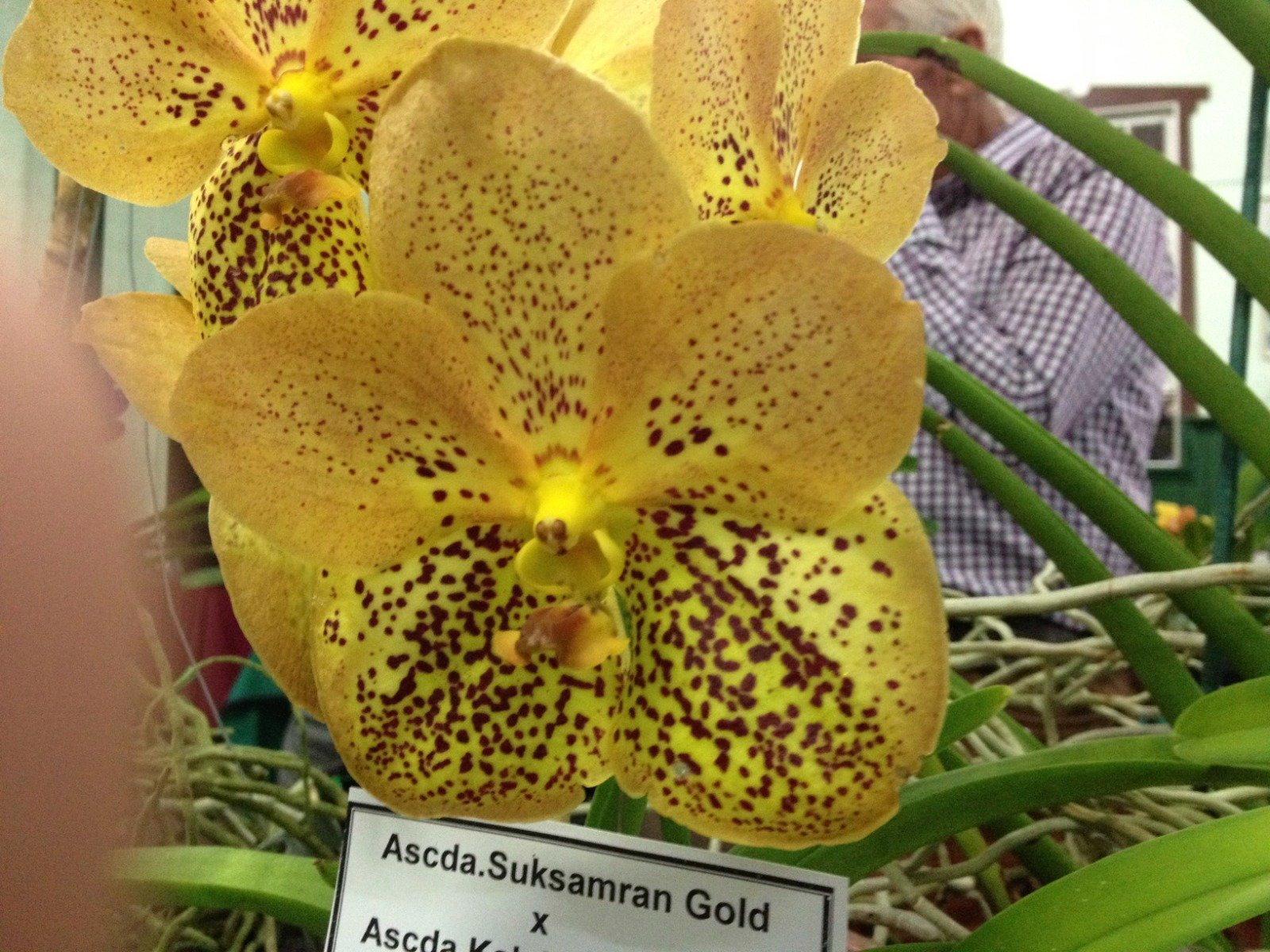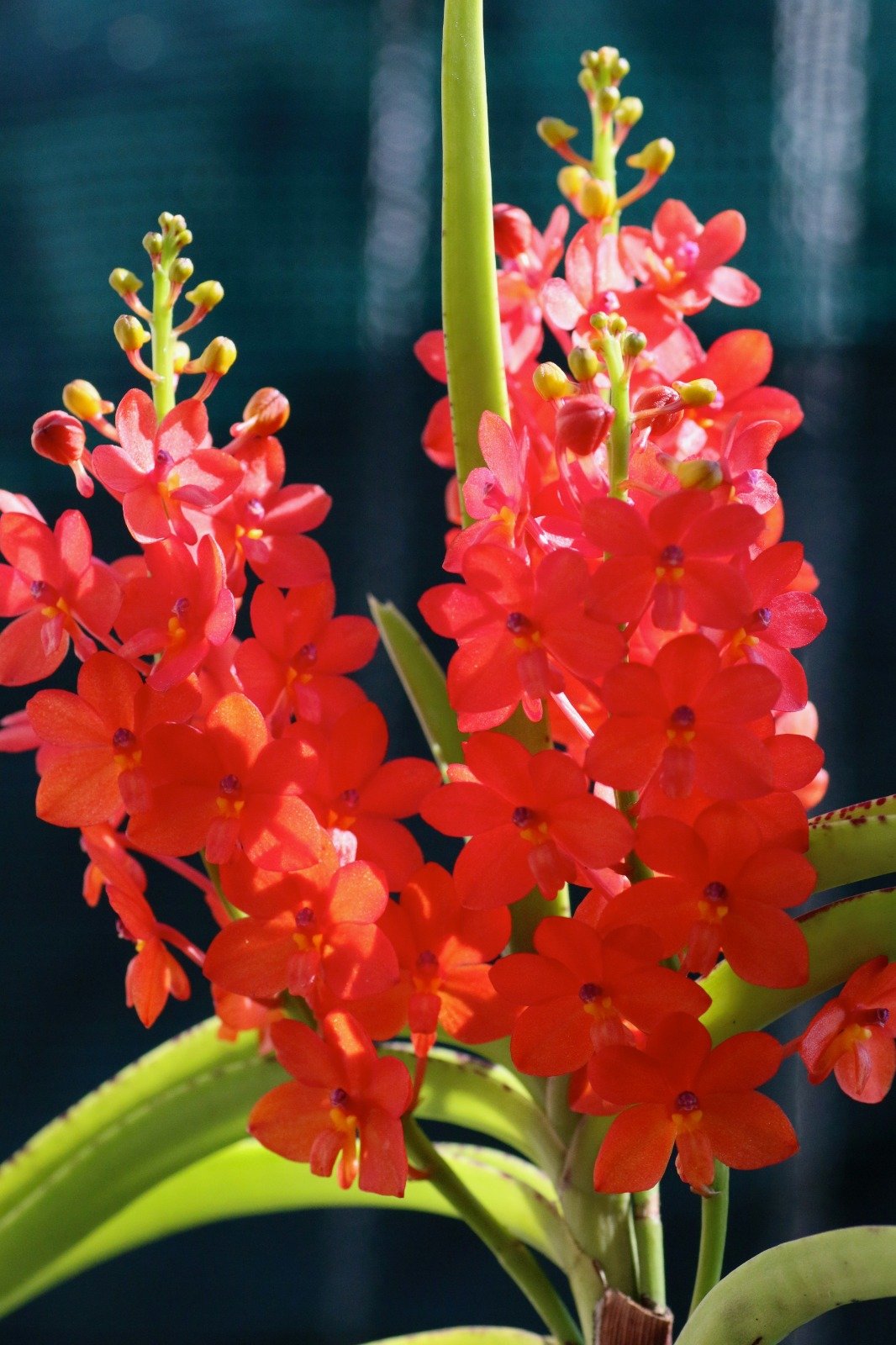Vandaceous Culture
The following article was submitted by Nambour Orchid Society member Mal Rivers and discusses his methods for growing Vandas on the Sunshine Coast and general information.
I started growing vandaceous orchids in the late 70s and early 80s. After several years, I realised that it is better to have a cover over them in winter. When I lived at Dulong, on the Sunshine Coast, it did not matter that they were covered. In winter, it was too cold anyway. The vandas just did not grow well.
When considering whether to grow vandas on the Sunshine Coast or not, look at your growing area, whether you have open, sunny areas or enclosed, shady areas. Position them so that they get morning sun and try to protect them from westerly winds. If you have trees, then you might like to attach them to a suitable tree, using old stockings. If you decide to have a shade-house, close to a tap is desirable. Decide where it is best to grow your vandas. Read books, do research on the heat, light, air, etc., requirements of vandas.
There are new names of vandaceous orchids, but I will not go into that here. Vandaceous orchids include Vanda, Ascocenda (now Vanda), Phalaenopsis, Renanthera, Rhyncostylis, and Aerides. They are monopodial orchids which have a single stem whichproduces new leaves at its growing tip and roots lower down the stem. Loosely speaking, the leaves of Vandaceous orchids form a fan shape. The leaves may be flat (like a strap, hence the term strap-leaf), terete (pencil shape) or a shape which is intermediate between the two. The strap-leafs require the same shade as Cattleyas while the teretes can grown in full sun, as long as they are given plenty of food and water.
Image courtesy of: https://tohgarden.com/orchid-care/vandaceous/
Watering
Vandaceous orchids require less water in winter than in summer on the Sunshine Coast.
Summer watering
On the Sunshine Coast, from about the end of September through to the end of March, they can be watered every few days. If conditions are hot, dry and windy, they can be watered daily, early in the morning. It is sometimes a good idea to water them late in the afternoon, around 6pm, as the plants take up moisture more readily overnight. Do not water during the heat of the day as water can collect in the crown of the plant and the warmed water may encourage the growth of harmful pathogens. Tap water is fine.
I have noticed in the past that often after rainfall, the ends of vanda root tips develop a jelly like substance. I think it’s a combination of rain water and high humidity. I have come to think it’s an indication of good growing conditions.
When healthy vanda roots are watered, you will notice the roots turn a light green colour. I try to remember that after I water the next vanda, to go back to the previous vanda and water this one again and the roots will take up more water.
Richard Hand, who also lives on the Sunshine Coast , is another member of Nambour Orchid Society. He uses no mix in the baskets of his large plants. He uses lengths of old man beard and drapes this over the roots and the beard gradually grows down the length of the roots and keeps it moist and humid. This works for Richard.
Winter watering
From about the beginning of April to the end of September, I cut down on watering substantially. In the colder months, I water infrequently and only mist the roots. These plants do not like to be wet overnight during the Sunshine Coast’s cold winter months. April and September, I increase my watering slightly. Whether it is Summer or Winter, the frequency of watering often depends on the conditions. If your orchids are not under cover and it has been raining, then obviously you would not need to water them. If however, it is a dull, overcast day, then you might want to wait until finer weather. More orchids have been killed by overwatering than under-watering. Vandaceous orchids like to dry out between waterings.
Light
The best growth is obtained by growing in a shade-house. However, good results can still be obtained by growing them in an area where they receive morning sun. Hanging under a patio roof with an Eastern exposure is ideal. Remember, the more light they get, the more fertiliser and water they need. You can attach them to a paling fence using an old stocking where they may get shaded from the midday sun and the afternoon sun by an overhanging tree. So long as they get that morning sun. Plants which are lush and dark green are not receiving enough light. Vandaceous leafs should be firm and a mid green colour, not too dark nor too light.
Feeding
Vandaceous orchids are heavy feeders and small plants need regular applications of high nitrogen, water soluble fertiliser. The larger, flowering size plants, do not need as much nitrogen. A flower boosting fertiliser containing some nitrogen, is all they need as this contains enough nitrogen for growth and provides more phosphorous and potassium for better flower development.
Air Movement
These orchids like plenty of air movement in Summer, especially around their root system. In Winter, some protection from the cold Westerlies would benefit them.
Aeration and potting medium
Vandaceous orchids and indeed, most orchids, should not be potted in soil as their roots require good aeration and the potting medium needs to drain freely. We use orchid bark and some pieces of charcoal. Small plants are best potting in small medium and large plants are best potted in larger medium.
Generally speaking, the best time to repot vandas if you live on the Sunshine Coast - and most places - is in Spring.
There are two main reasons for repotting – one is the plant has grown over the edge of the pot and become difficult to train and stake; and the other is that the potting medium has broken down. If you see that your plant has a problem, un-pot it and check the state of the medium and the root system. If the medium is breaking down and is soggy and wet, replace it. If the root system looks unhealthy (brown, soft, mushy roots) then you need to repot.
Always look for roots which are whitish and firm, and in the growing season, will have green coloured live root tips. When repotting, do not over pot, use a square basket which will allow two, perhaps three years growth. Wet the roots of the plant taking as much care as possible not to break them (they are quite brittle), squeeze the sides of the pot to loosen the potting medium, then take a firm fold near the base of the plant and gently start to pull the plant out of the pot. When you have the plant out of its pot, trim off all dead and soggy roots. Remember, live healthy roots will be whitish and firm.
As you place the plant in your new pot, you may need to wind the longer roots into the inside of the pot or through the slats of the basket. When you are happy with the plants position, place your new medium in the pot and around the roots. You may need to use a green bamboo stake to hold the plant steady as any wobbling will prevent new roots from establishing. Most people hang their vandas and you can use the wire hangers to position your plant and lend it some stability.
This article was written by Mal Rivers. for the NOS newsletter in 2014.






